Changing seasons
The winter vege garden
Sarah O’Neil ponders the practicalities of getting ready for winter while the summer vege garden keeps on giving.
When the calendar turns to March, autumn has officially arrived and it’s the exciting beginning of a brand new planting season. But still, those zucchini are coming thick and fast and by now you should have tried almost every recipe known to man to use them up. The tomatoes have slowed a little, but peppers are still peaking and pumpkins are ripening to amazing shades of orange.
All the hard work of spring and summer is really paying off. At this time of year the garden is by no means ready to be relegated to the compost heap.
But here’s the dilemma. Cool season crops really need to go in now. They need the warmth of autumn to get a head start before the cold weather slows them down.
For most of us, space is limited and hard decisions need to be made. What can come out? Zucchini perhaps? Maybe like me, you get to the point that the thought of eating another zucchini is too much to bear. Zucchini does take up a lot of space; just think how many other plants could grow in its place. Or maybe container gardening is the best plan for the coming months – a garden that can be moved closer to the house for frosty winter harvests.
If tomato plants still drip with green fruit when you want to clear their space, you could make green tomato chutney or hang the trusses in a cool dry shed to continue ripening. Almost ripe fruit will ripen in a bowl on the bench (never in the fridge).
Prepare the soil
As the last traces of summer are cleared away, dig over the soil to remove roots and weeds. Enrich the soil with well-rotted manure, fertilisers and compost to replace all the nutrients used by summer crops, while you consider what yummy winter crops might fill
the space.
What to grow?
There is a surprising number of things that can be grown through the depths of winter, so much so, there is a danger that the winter garden can become larger than the summer one. There are the usual suspects that are synonymous with winter: cabbage, broccoli, leeks, cauliflower, Brussels sprouts, carrot, parsnip and silver beet, all of which will enrich any bowl of steaming comfort food. And even lettuce and peas can be grown all year long if you choose the right variety and protect them from frost! But there are other ones – unusual ones, ones you would pay a fortune for in the stores – if you could find them at all.
- Kohlrabi – this odd looking vege is related to cabbage, but has a multitude of uses, raw or cooked and will add a refreshing change to the standard winter fare.
- Kale – this has been hailed as one of the healthiest vegetables around. It’s in the brassica family and has an amazing depth of flavour and is really easy to grow.
- Turnips – it is high time these old fashioned crops experienced a revival. They are easy to grow and taste superb. Put your prejudice aside and give them a chance.
- Celeriac – Another weird looking plant related to celery, but worthy of space in your garden for what it can do for your soups and roasts.
- Witloof – like a lettuce in the winter, only it can also be cooked and will add a delightful variation from all the heavy root crops generally eaten in winter.
Despite a garden being full of dirt – hygiene is really important
Autumn can be a little damp, while retaining some residual warmth from the fading summer and so it is perfect for fungal disease to make itself at home in your garden. As you clear away your summer crops, be thorough with the removal of dead and decaying material and don’t put diseased plants on your compost heap or leave them lying about or you will make a problem for yourself later on.
Drainage is critical
Wet soil is more likely to be a problem in winter than it is in summer, and you may need to address this. Vege plants will fail to thrive in waterlogged soil. The easiest solution is to mound up the soil above the level of the surrounding land and plant into this raised bed. Dig a small drainage trench around the garden if it is particularly bad and don’t walk on the wet soil.
Confronting a cold snap
Depending on where you live, frost can be a constant threat in the autumn. Keep a close eye on the forecast. Plants are most susceptible when they are young and actively growing. These days it’s quite easy to get hold of frost cloth or a frame to make a mini polytunnel to protect your crops. The protection needed depends on your climate and weather patterns, which change from one year to the next.
Patience is needed
Gardening through the winter months can be rewarding and invigorating, but it isn’t without its challenges. It’s nothing like the heady days of summer when you turn your back and a baby zucchini becomes a marrow. Things grow slower, but good things take time.
Sow or plant in March:
- Beetroot
- Brussels sprouts
- Broad beans
- Broccoli
- Cabbages
- Carrots
- Cauliflowers
- Chives
- Florence Fennel
- Kale
- Kohlrabi
- Leeks
- Lettuces
- Onions
- Parsley
- Radish
- Rocket
- Pak Choy
- Shallots
- Silverbeet
- Swedes
- Turnips
22-Mar-2013
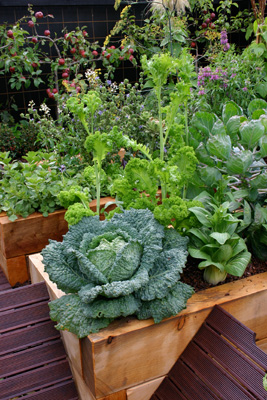
Rachel Matthew's award winning garden at the 2012 Ellerslie International Flower Show
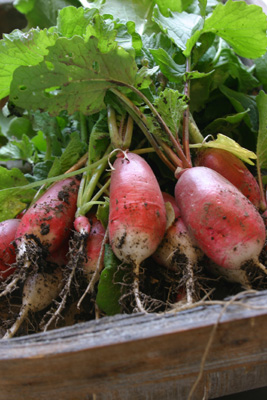
Radishes
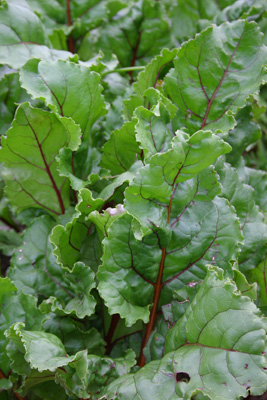
Silver Beet
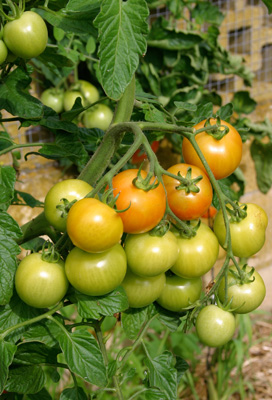
Tomato tip: Late summer or about a month before the first expected frost or before pulling plants out, cut off top of your tomato plants and remove flower clusters. This directs energy into ripening existing fruit instead of producing new fruit, which won't have time to mature.
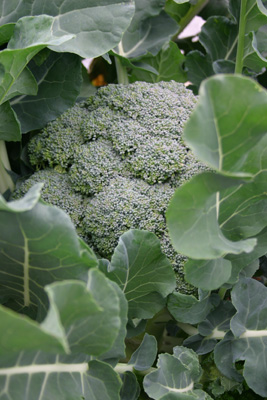
Broccoli


